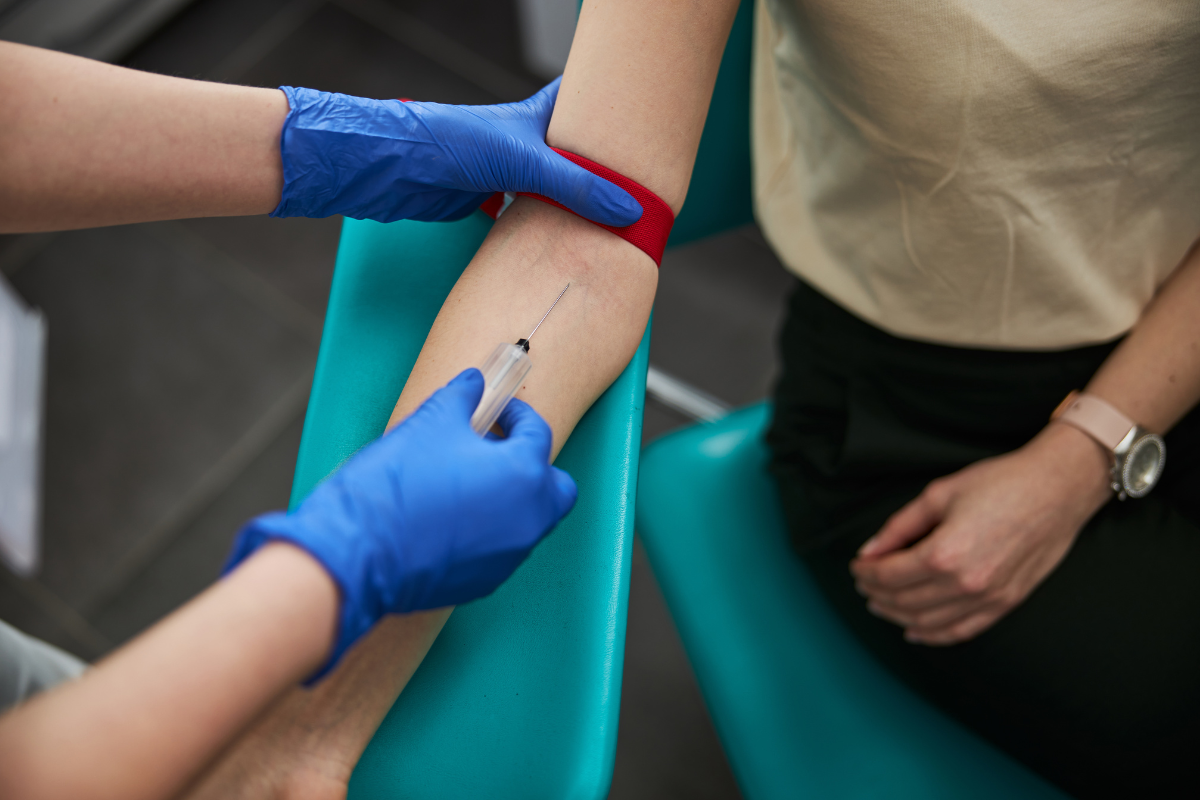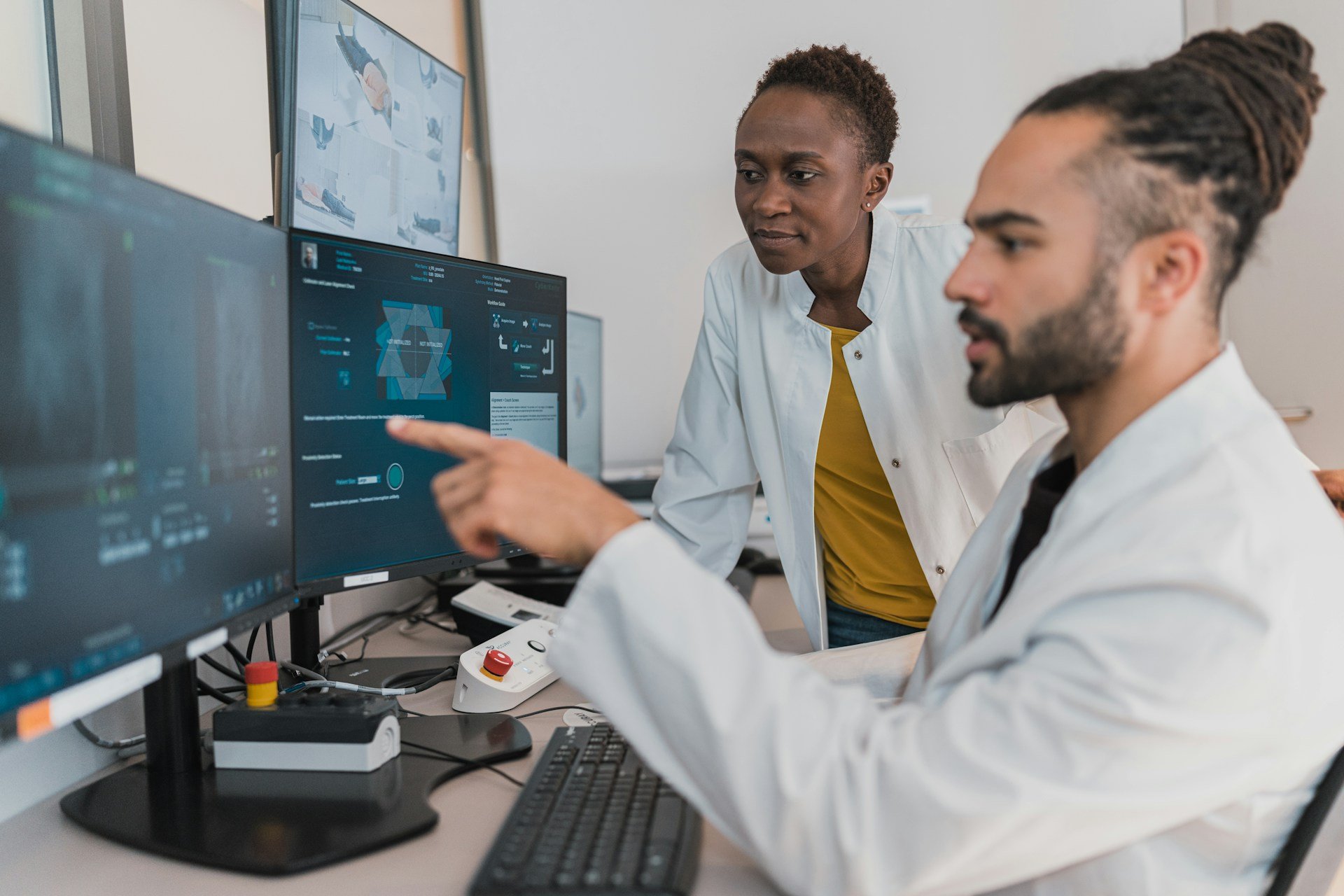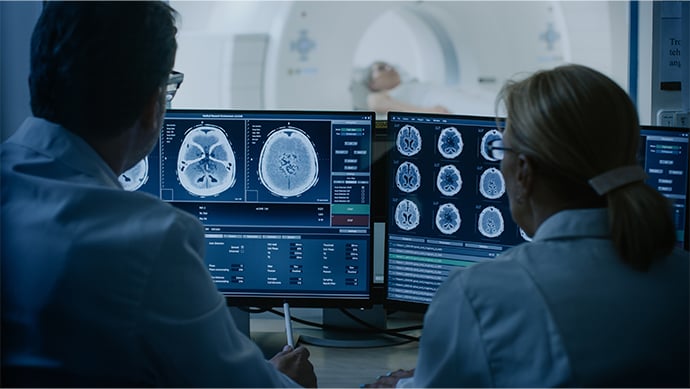Spatial Biomarkers & Multiplexed Immunofluorescence in Immuno-Oncology

Our May Discussion Group came together for an hour of specialist discussion about the current state and future directions for harnessing spatial biomarkers technology and multiplexed immunofluorescence in immuno-oncology. This Discussion Group was a selected group of key industry leaders from various pharmaceutical companies and research institutions. Notable attendees included senior representatives from Bayer, UCB Pharma, Poseidon Labs, AstraZeneca, and AbbVie.
Yu Liang, Director of Clinical Biomarkers at Compugen, led the discussion. He was joined by Vilma Decman, Senior Scientific Director; Head of the Cellular Biomarkers at GSK, who was there to support. Key discussion topics included analysing the limitations of predictive biomarkers in immuno-oncology, improving biomarker discovery with multiplex immunofluorescence, and application of spatial biomarkers in translational and clinical research.
Predictive Biomarkers in Immuno-oncology:
Liang kicked off the session with a brief introduction to the current landscape of predictive and exploratory biomarkers for immuno-oncology treatment. The overview focused on FDA approved biomarkers such as PDL1, TMB, and MSI-H/dMMR and those currently under investigation. Liang identified the latter as pertaining to tumour intrinsic, tumour extrinsic, and peripheral immune repertoires. Other periphery markers include surrogates for tissue-based markers.
Upon discussing the challenges of identifying potential biomarkers, Liang explained how “combining biomarkers from different platforms might provide better prediction than relying on a singular biomarker approach.” Additionally, multiple markers might be necessary even within one biomarker platform. This means a multiplex platform is required to study multiple markers with a limited number of slides.
Multiplex Platforms for Immunofluorescence:
“Because of the need to incorporate more than one marker to better predict response, immunofluorescence is critical in terms of tissue-based immuno-chemistry,” Liang explains. Multiplex immunofluorescence works by detecting multiple targets from one section and then implementing staining-bleaching. Multiplex spectrometry imaging and signal amplification techniques can also be utilised to achieve multiplex platforms.
- What’s Next for Predictive Biomarkers in Immunotherapy?
- Discover how Ultivue uses Spatial Imaging to Observe Biomarkers
- Biomarker Diagnostic Discovery in Immuno-Oncology
This technology interrogates spatial information between targets in a cellular context and uses “the spatial distance and relationship between targets to achieve a higher plexi,” Liang continued. It is also possible to question and analyse the molecular components underlying the spatial information through the regions of interest (ROI). According to Liang, the latter is “like the nanostring platform you can select the ROI to conduct nano chain chemistry and then introduce direct sequencing for the whole exosome and transcriptome.”
Applications of Spatial Biomarkers in Drug Development:
Liang then discussed how best to harness spatial information to facilitate translational research. After qualifying a biomarker and validating the relevant assay, the goal is to select patients for treatment in the clinical development. However, some key considerations determine translation. For instance, it is paramount to pre-empt how the platform will fit into the clinical lab testing setting and whether the tissues from clinical trial patients meet quality requirements.
Streamlining Predictive Biomarker Selection in Immuno-Oncology:
Once the overview concluded, Decman opened the floor to discuss the best practices for biomarker selection. “At GSK, we do a lot of clinical sample testing, and we’ve observed that before you can move onto the patient certification stage, you really need to understand the questions you will be asking,” she began. A thorough comprehension of the disease itself is likewise critical. “The approach we take is to conduct rich exploratory studies in the preclinical stage and then move on to the translational work,” Decman continued.
Audience members concurred with Decman’s suggestions and inquired about the utility of smaller scale enabling studies. Decman attested to such strategies deeming them a competent determiner of disease signature or a potential response to a mechanism of action. Other techniques mentioned were digital spatial profiling using mass cytometry which the audience championed as “providing a rich array of information.”
Enhancing Translatability for Biomarkers in Immuno-Oncology:
Conversation then turned towards possible ways to enhance preclinical to clinical research translatability. One audience member mentioned how in addition to conducting spatial profiling, increasing likeability during translation is key. “The goal is to achieve and learn about the unrivalled biology of resistance to checkpoint inhibitors,” the said party explained.
“In order to facilitate this smooth translation when identifying biomarkers with predictive potential for our IO molecules, we need to work out all the caveats of the preclinical models,” they continued. Moving away from genetic mouse models to embrace ex vivo models can provide significant insight into the biological resistance in immuno-oncology to checkpoint inhibitors. The acquisition of real-world data can, according to the above-mentioned audience member, “further help us unravel the biology.”
Concluding Thoughts:
The discussion wrapped up with some final thoughts on the future of spatial biomarkers and multiplexed immunofluorescence. Recent innovations in the study of spatial biomarkers continue to demonstrate the predictive power of this new class of biomarker assays. At Oxford Global, we couldn’t have been more pleased with the turnout for our May Biomarker Discussion Group. The conversation was engaging, the debate stimulating, and the industry insights invaluable. We will continue our Discussion Group series in June with a session focusing on ‘Current Status of Omics-based Biomarkers’. Learn more about the Oxford Global Discussion Group series at our Biomarkers Content Portal.
Want to find out more about the latest Biomarker news? Register now for our Biomarkers & Precision Medicine US Congress to discover the latest technologies and novel biomarkers driving forward translational research and precision medicine.







